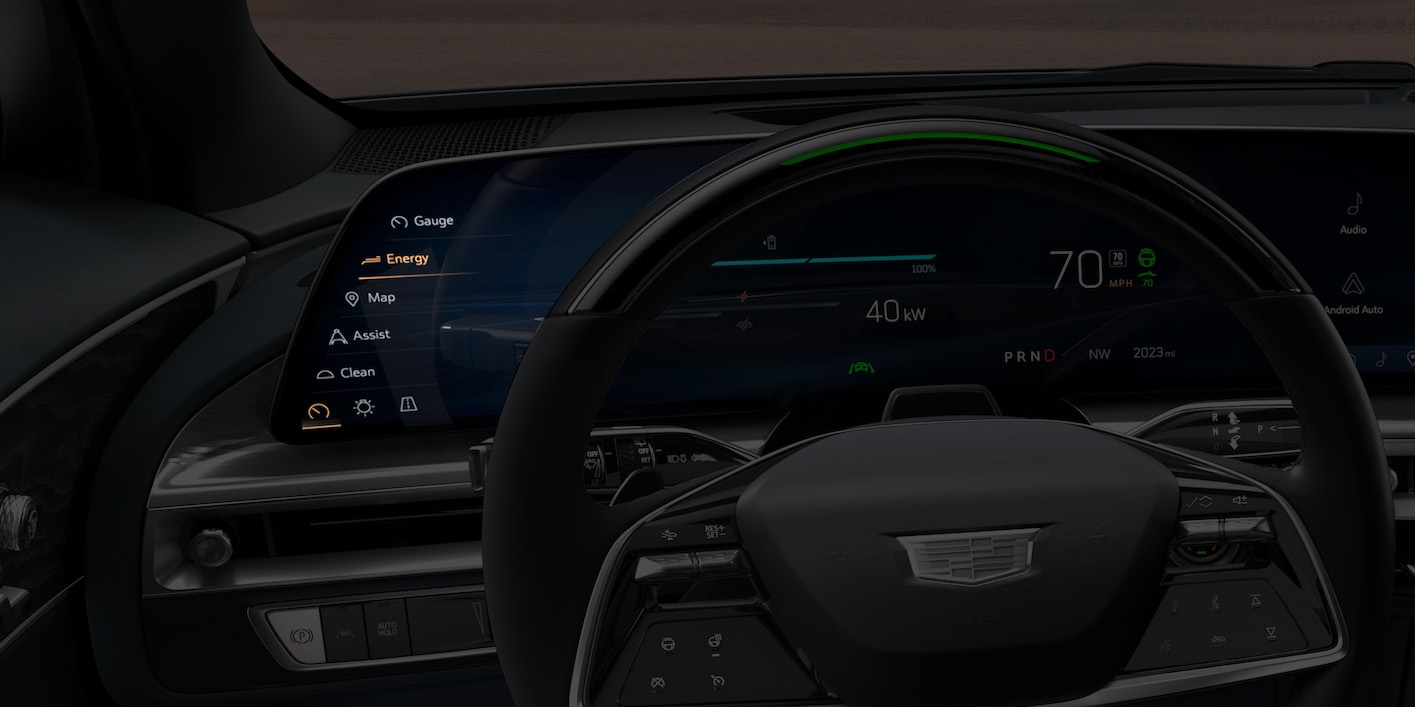Auxiliary Display
What is the Auxiliary Display?
The Auxiliary Display made its debut with the 2021 Cadillac Escalade, offering a sleek and intuitive way to enhance driver interaction. This innovative feature provided quick access to essential functions, such as customizing cluster gauges, lights, viewing trip information, and activating Lane Keep Assist. Additionally, it offered convenient quick controls for adjusting the Head-Up Display (HUD), allowing drivers to tailor their experience effortlessly.
Team
- Me - Lead Product Designer
- 2 - Developers
- 3 - Stakeholders
My Objectives
- Streamlined documentation into a unified, accessible Design System.
- Defined specifications for enhanced Auxiliary Display functionality.
- Introduced widgets, personalization, and expanded tab features.
- Aligned design with development for proper UI implementation.
- Validated performance through rigorous in-vehicle testing scenarios.
When I took ownership of the Auxiliary Display framework, I quickly uncovered a lack of cohesion in both documentation and implementation. At the time, two separate versions were being developed simultaneously, each with its own Sketch file, designed by different developers. The Design System was fragmented, with specifications scattered across multiple sources, making it difficult to maintain consistency.
To bring clarity and structure, I consolidated the Design System into a single, easy-to-navigate website, ensuring all documentation was streamlined and accessible. I collaborated closely with developers to gain a deep understanding of the development cycle, aligning timelines with the release of the updated UI. Additionally, I worked to ensure that all regulatory requirements were met, guaranteeing compliance while enhancing the overall user experience.
This effort laid the groundwork for a more efficient, scalable, and well-documented Auxiliary Display system, setting a strong foundation for future development.
To fully understand the potential of the Auxiliary Display, I explored how other manufacturers approached similar features.
The Lucid Air had the closest implementation to GM’s Auxiliary Display, but its functionality was limited to quick controls such as Lock/Unlock, Charge Port, Lights, Windshield Wipers, and Defrost.
Other manufacturers, like the Porsche Taycan and newer BMW models, opted for virtual button implementations near the screen, offering a different approach to auxiliary functionality.
This analysis provided valuable insights into existing solutions and highlighted opportunities for innovation, but I wanted to take it a step further than what was currently in the market.
During the discovery phase, I began exploring the concept of small screens packed with information and functionality. My thoughts quickly gravitated toward wearables and compact mobile devices, which excel in maximizing limited space. The Apple Watch, GoPro, and Galaxy Z Flip stood out as prime examples, showcasing how thoughtful design and innovation can deliver powerful features within a confined real estate. These devices became key sources of inspiration for reimagining what the Auxiliary Display could achieve.
Disclaimer:
The designs and concepts presented in this section are entirely original recreations developed after my departure from GM. They are inspired by my personal experiences and learnings but do not contain, reference, or utilize any proprietary, confidential, or internal materials from my time at GM. These works are purely conceptual and hypothetical, intended solely for showcasing my design and problem-solving abilities.
My goal was to integrate elements from wearables and compact devices—technologies designed for small, glanceable interactions—while ensuring that everything made sense within a driving context. I also wanted the framework to be customizable and responsive, allowing it to scale across different form factors and screen sizes as future Auxiliary Displays evolved.
One of the biggest challenges was working around obscuration zones, which varied dramatically from driver to driver. Depending on seat position, height, and steering wheel adjustments, some users had an unobstructed view of the display, while others struggled to see key elements. At six feet tall, I had no issues, but my wife, who is shorter, couldn’t clearly see certain UI elements like app icons and chevrons. This reinforced the need for flexibility in design—not just in terms of layout but also in interaction methods.
To improve user interaction with the Auxiliary Display, I moved away from static buttons and deep menus, instead focusing on natural swipe gestures for a more fluid and predictable experience. I introduced a widget-based system that allowed apps to expand their features beyond a static panel, making the display more dynamic and adaptable—a concept that later aligned with the Passenger Display in the 2025 Escalade. During prototyping, I designed the interface to be driver-centric, anchoring customization to individual profiles so each driver could have relevant widgets instantly available. Navigation was streamlined into a left-right swipe system, enabling quick access to key information without diverting focus from the road, especially at high speeds.
After testing the design on a mockup, I saw an opportunity to introduce quick controls—non-intrusive but readily accessible shortcuts that allowed users to adjust key settings without interrupting their workflow. By focusing on adaptability, personalization, and intuitive interactions, I created a more dynamic and scalable Auxiliary Display that not only solved immediate usability issues but also laid the groundwork for future innovations in vehicle display systems.

Redesigning the Auxiliary Display highlighted the importance of scalability, accessibility, and intuitive interactions. Obscuration zones varied based on driver height, seat position, and steering adjustments, reinforcing the need for a responsive layout that adapts to different viewing conditions. Studying wearables and small-screen devices led to the integration of gesture-based navigation and a widget-based system, allowing for quick, personalized access to key information without distraction. Ensuring future-proofing was also critical, as the design initially focused on the driver but remained flexible for potential expansions.
Working closely with developers and real-world hardware emphasized the gap between design simulations and actual driving conditions. Early concepts performed well in controlled settings but required refinement after in-car testing exposed usability challenges. By prioritizing driver-centric design, adaptability, and seamless integration, the Auxiliary Display evolved into a dynamic system that enhances the in-vehicle experience while laying the foundation for future innovations.









